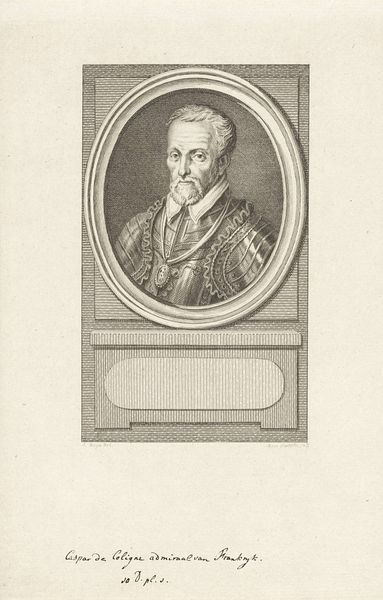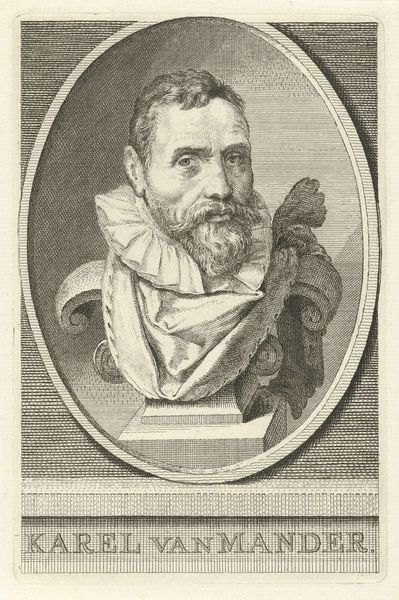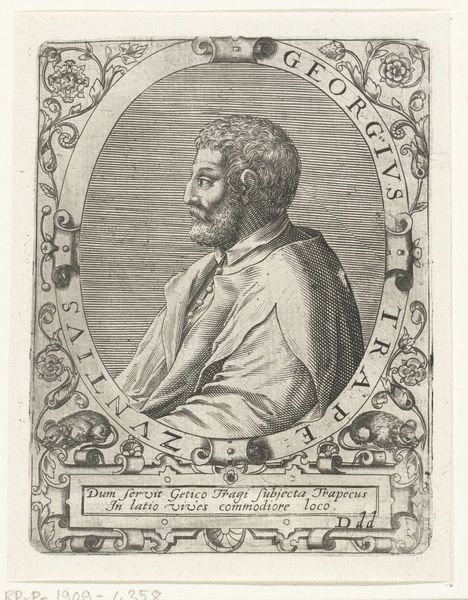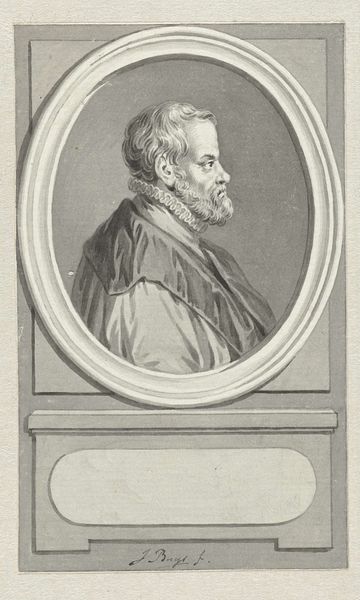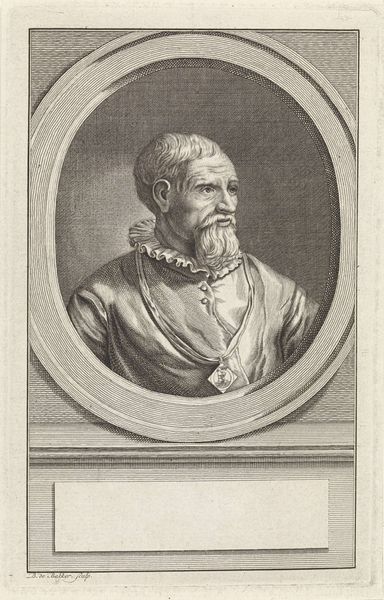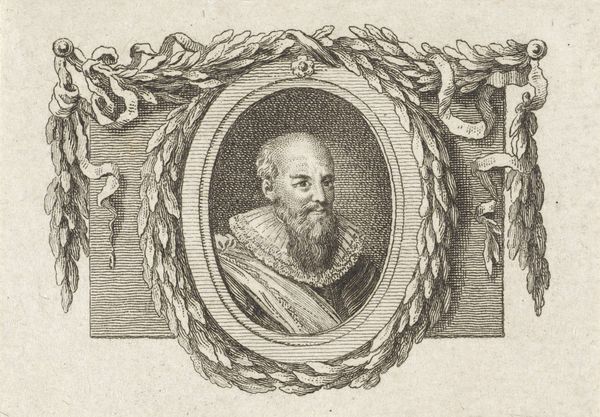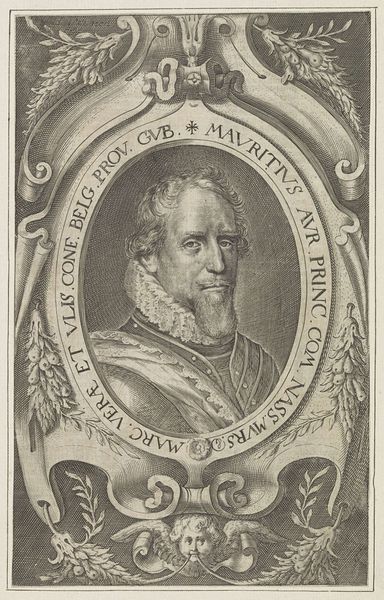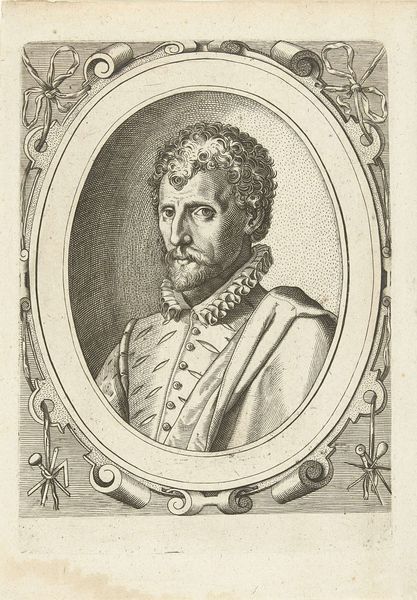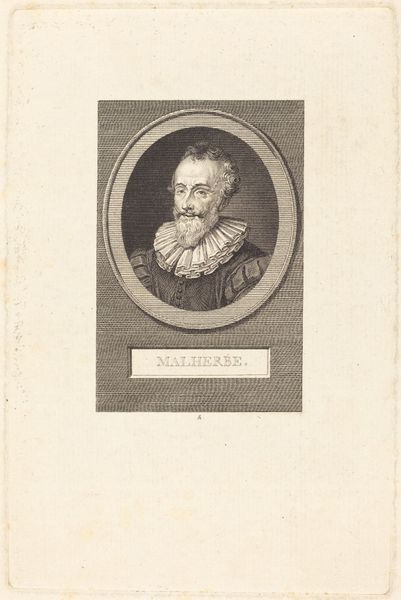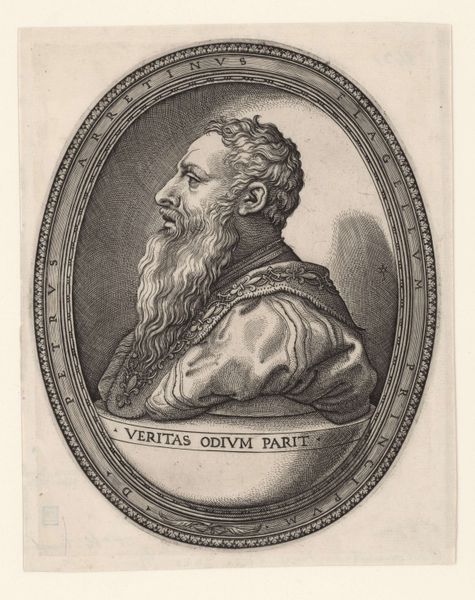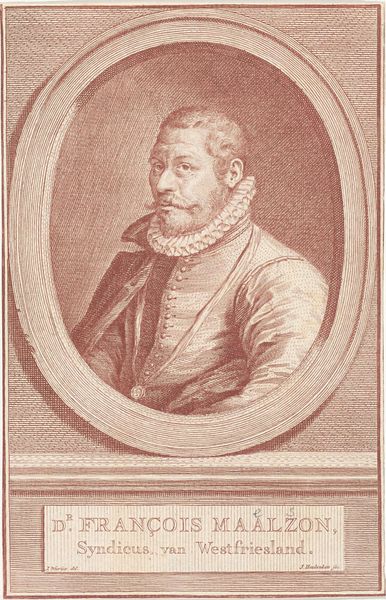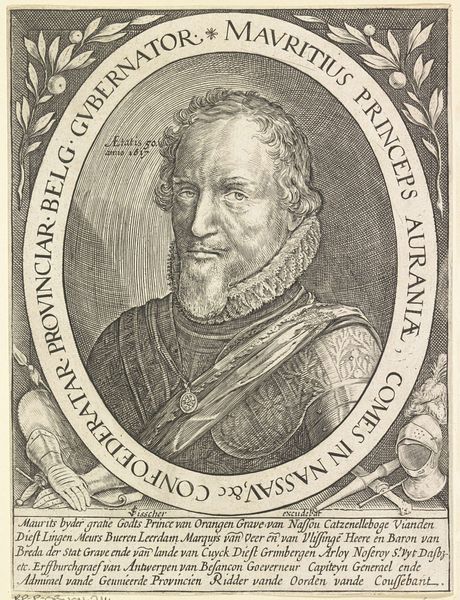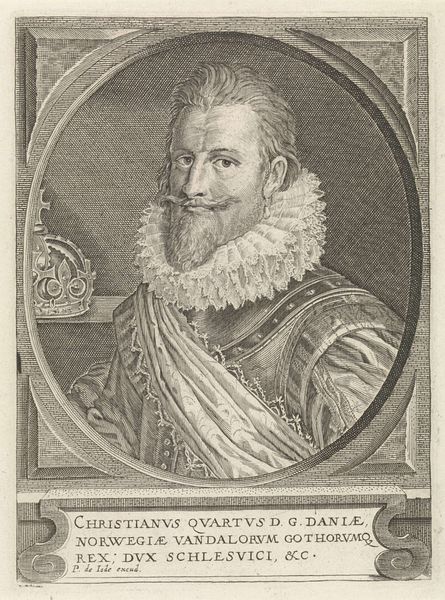
print, engraving
#
portrait
#
neoclacissism
# print
#
old engraving style
#
history-painting
#
engraving
Dimensions: height 95 mm, width 64 mm
Copyright: Rijks Museum: Open Domain
Editor: Here we have Angelo Emilio Lapi's print, "Portret van dichter Torquato Tasso," made sometime between 1779 and 1852. It's a portrait of Torquato Tasso in the neoclassical style. It has a very formal and somber feel to it, fitting for the serious depiction of this famous poet. What can you tell me about the cultural significance of this image? Curator: Well, first, notice how Tasso is framed within an oval. This oval form suggests an echo of ancient cameos and portrait medallions, recalling the authority of classical antiquity. The use of the Neoclassical style suggests that Tasso is being elevated to a classical level. Also, the crosses on his attire --what do they suggest to you? Editor: They strike me as interesting… maybe representative of some sort of chivalric order? Indicative of status and possibly some connection to religious power, linking back to a historical context? Curator: Precisely. Such imagery connects him to a lineage of power and faith, tapping into collective memory. Ask yourself, what's the emotional effect of this chain upon viewers across centuries? The uniform background, combined with the sharp details and clean lines typical of the neoclassical style, evokes a sense of order, rationality, and idealization. This portrayal aimed to shape and reinforce Tasso’s cultural status. Editor: I see now, the piece uses classical visual cues to grant authority to the portrayed individual by suggesting parallels to a history of nobility, and this print would further spread that image through society. Thanks, I’ll keep this in mind going forward! Curator: It is always in the layers of visual information that true iconographic meaning resides, continuing through time!
Comments
No comments
Be the first to comment and join the conversation on the ultimate creative platform.
